Table of Contents
ToggleIntroduction
Golang is the brainchild of three maestros from Google, Robert Griesemer, Rob Pike, and Ken Thompson. Golang’s birth was rather dramatic like that of the mythical heroes, who take birth to save the world. In the case of Golang, it took birth to rectify the shortcomings of other major programming languages such as C++. Since then, this miracle child of Google has been the talk of the town. Today, more and more developers prefer Golang for developing high-performance web applications with the need to handle a large user base. Why? Because of its simplicity, efficiency, and concurrency features. Also because of its cool set of frameworks that streamline the development process and improve program productivity in the era of networked machines, multicore, and large codebases.
How does Golang Web Framework help?
Golang Web Development Framework helps you write APIs and web services without any hassle. It is not compulsory to use these frameworks when developing a simple application, but these frameworks are recommended when you are developing a complex application.

Don't miss out on your chance to work with the best
apply for top global job opportunities today!
Why use Golang Web Development Frameworks?
- Robust Performance: Golang’s simplicity adds up to its robust performance. It compiles quicker, runs faster and is easy to maintain and support. This, thus leads to shorter software development lifecycles.
- Quick Garbage Collection: Go offers a fast garbage collecting feature without cramming up the system’s memory with junk like in Go. The system’s memory isn’t crammed with junk
- A comprehensive set of library or packages: This web technology comes with built-in libraries and packages make the web development process quicker and effective.
- Static Typing: The static typing feature averts the risk at the coding stage, as the errors are detected during the compile time itself.
- Simple Syntax: Go frameworks offer a minimalistic syntax which is easy to learn and read.
- Huge Testing Support: Go offers built-in testing support. This way you can test as you go about writing codes.
Top 10 Golang Frameworks in 2023
| Framework | HTTP Router | Middleware | Performance | Templating Engine | ORM | Community Support | Learning Curve | Active Development |
|---|---|---|---|---|---|---|---|---|
| Gin | Yes | Yes | High | HTML/template | Yes | Strong | Moderate | Active |
| Echo | Yes | Yes | High | html/Template | Yes | Growing | Moderate | Active |
| Beego | Yes | Yes | Moderate | Beego Templates | Yes | Strong | Moderate | Active |
| Revel | Yes | Yes | Moderate | Revel Templates | Yes | Moderate | Moderate | Active |
| Buffalo | Yes | Yes | High | Plush | Yes | Growing | Moderate | Active |
| Iris | Yes | Yes | High | html/template | Yes | Growing | Moderate | Active |
| Gorilla | Yes | No | High | N/A | No | Strong | Moderate | Active |
| Goji | Yes | No | High | N/A | No | Moderate | Moderate | Inactive |
| Chi | Yes | Yes | High | html/template | No | Growing | Moderate | Active |
| Fiber | Yes | Yes | Very High | Fast template | No | Growing |
Following are the top 10 Golang Frameworks you can choose from for your web development process:
1. Gin

Gin is a high-performance HTTP web framework written in Golang. In comparison to other frameworks used for writing modular web applications and services in Golang, Gin is 40 times faster. Thus, its high demand in the Golang community! Gin decreases the boilerplate code by making reusable and extensible pieces of code. Meaning, you can write a piece of middleware that can be capped into one or more request handlers. Gin is a framework that is specially designed to handle high-performance web applications. It is a lightweight, fast, and flexible Golang. Its features include error handling, routing, middleware, etc. It is one of the most popular Golang web frameworks. Thanks to its minimalist framework and performance. It is used by many companies such as Airbnb, Uber, and IBM.
Features
- Zero allocation router
- Fast
- Middleware support
- Crash-free
- JSON validation
- Routes grouping
- Error management
- Rendering built-in
- Extendable
Applications of Gin
To develop web applications, microservices, and RESTful APIs
Pros
- High performance, i.e., 40 times faster API performance
- Crash-free
- Great error management
- Easy JSON validation
- Room for control and experimentation
- Huge community support
- Poor documentation
- Verbose syntax
- Can be rigid in the development phase
- Not a great choice for large backend applications or enterprise-level server complex functions
2. Echo

Echo is a high-performance, minimalist, extensible Go web framework. It is yet another lightweight Golang web framework that is designed for easy use. It also offers features such as middleware, routing, and templates. Echo stands between stdlib + router and a full-stack web framework.
Features
- Highly optimized router
- Scalable
- Automatic installation of TLS certificates
- Inbuilt middleware
- Data binding
- Customized error handling
- Data rendering
Applications of Echo
It is good for developing RESTful APIs and microservices.
Pros
- Offers high security
- Supports a variety of file types for HTTP responses
- Template and data rendering
- Simple and minimalistic framework
- Less community support
- Less control over minute details
- Slower performance
3. Beego

Beego is a full-stack Golang framework. Beego offers features including middleware, routing, ORM, and templating. It also includes a built-in development tool that makes it easy to generate code and run tests.
Features
- RESTful support
- MVC architecture
- Modularity
- Annotation router
- Namespace
- Powerful development tools
- Full stack for Web & API
Applications of Beego
Beego is used to build enterprise applications such as web apps, RESTful APIs, and backend services.
Pros
- Saves a lot of time
- Offers faster web app development
- Offers built-in cache handler, integrated ORM, logger, etc.
- Doesn’t require a third-party library.
- Less community support
- Very limited third-party integrations
- The steep learning curve for beginners

Don't miss out on your chance to work with the best
apply for top global job opportunities today!
4. Revel
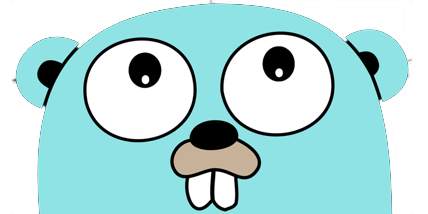
Revel is a flexible Go framework used for full-stack development. Revel is a self-independent framework that doesn’t depend on any third-party plugins. Developers can leverage the MVC architectural pattern in Revel to build efficient web applications with no hassle.
Features
- Automatically compiles your code and templates
- Easy migration features
- Offers middleware called filters, which helps with all request-processing
- Helps avoid the hassle of copying and pasting codes. Thanks to its MVC Components.
- Offers an inbuilt dependency management tool known as go mod that helps make consistent builds without any issues.
Applications of Revel
Revel is a full-stack framework perfect for your entire web development process.
Pros
- Pre-configured features
- Huge community support
- No third-party plugins
- Full-fledged framework
- Heavier framework than its counterparts, Gin and Echo
- Difficult to learn for beginners
5. Buffalo
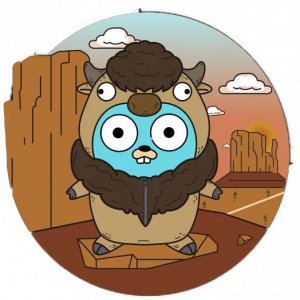
Buffalo is a Go framework that focuses on rapid application development. It aims to streamline the full development process. It offers an extensive set of tools that come in handy while generating code, handling dependencies, and installing applications. It is thus a suitable option if you are looking for a comprehensive web development solution.
Features
- Offers a toolkit that helps with generating different parts of your app.
- Webpack-generated configuration to develop frontend assets.
- Offers a dev command that helps you to restore your app, from the backend to the frontend.
- Compatible with databases including MySQL/MariaDB, PostgreSQL, CockroachDB, SQLite.
- Makes use of Gorilla toolkit to handle routes, sessions, cookies.
- Assists you with defining test suites.
Applications of Buffalo
Buffalo helps you to create a web application that already has the front end (JavaScript, SCSS, etc.) to the back-end (database, routing, etc.).
It offers easy-to-use APIs that help you build web application instantly in Go.
Pros
- Takes care of the entire development ecosystem
- Inbuilt support for ORM and database migrations
- Incorporated with templating and asset management features
- Active community and frequent updates
Cons
- Not suitable for smaller web development projects
- Not conducive for beginners
6. Iris
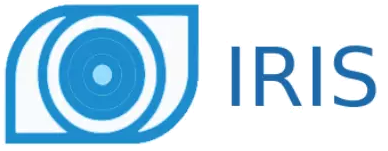
Iris is a Go framework well-known for its robust set of features and simplicity. It is a well-designed and effective cross-platform web framework that can help you develop high-performance web applications and APIs. Thanks to its limitless potential and portability. If you are well-versed with Node.js. then know that this is the Express.js equivalent of the Golang language.
Features
- Open-source framework
- Sinatra-like API.
- Compatible with all the existing middleware
- Robust routing features
- Scalable web socket
- MVC pattern
- Develops productive and stable APIs for users
- The localization feature offers an easy way to recover strings in different languages, which allows compatibility with multiple languages within your application.
Applications of Iris
Iris is perfect for building high-performance web applications and APIs.
Pros
- Well documented
- Active community support
- High-performance and easy-to-use
7. Gorilla
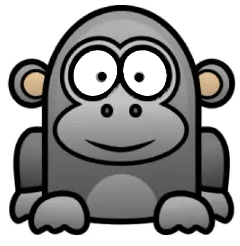
Gorilla is a toolkit for the Go programming language that comes bearing effective, composable packages to build HTTP-based applications.
Features
- Scalability and modularity
- Simple and minimalistic framework
- Offers an HTTP middleware library that extends (CSRF) protection
Applications of Gorilla
Gorilla is mainly used to develop Rest APIs.
Pros
- Easy to use
- Accessible net/http library
- Clean and optimized framework
- Limited framework capabilities as it is a routing package and doesn’t offer features you’ll find in a full-stack web framework.
- Steep learning curve
- Lack advanced features
8. Goji
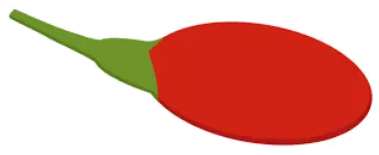
Goji is a simple Go framework. Gojis is lightweight and focuses on performance. Goji features include middleware, routing, middleware, and request handling. It is a prevalent choice among Go developers looking for a quick and effective framework.
Features
- Minimalistic design
- Well-suited with net/http.
- URL patterns include both custom patterns and Sinatra style /foo/:bar patterns with regular expressions
- Rearrangeable middleware stack.
- Default compatibility with Einhorn, systemd, and more.
Applications of Goji
Gorilla is mainly used to develop Rest APIs.
Pros
- Lightweight and effective framework.
- Fast performance
- Ability to manage a large number of requests instantly and effectively. This makes
- Widely used: Goji is a popular choice among Go developers, which means you can find a lot of online resources and support if you need help with your web app development.
- Doesn’t offer advanced features that can be easily found in a full-stack web framework. S
- Steep learning curve
9. Chi
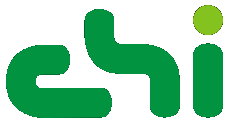
Chi is an idiomatic, lightweight, composable router for developing Go HTTP services.
Features
- Lightweight
- Flexible and extensible
- net/http compatibility
- Perfect for modular/composable APIs – middlewares, inline middlewares, route groups, and sub-router mounting.
Applications of Chi
- Chi helps write large REST API services.
- Perfect for development web development projects that need a equilibrium between simplicity and customization
Pros
- Flexible routing with the ability to handle complex routing scenarios.
- Modular design for easy integration and extension with other libraries.
- Middleware stack that helps to seamlessly add cross-cutting concerns.
- Smaller ecosystem limits the availability of specific libraries or extensions.
- Needs to be integrated with third-party packages for certain functionalities.
10. Fiber

Inspired by Express.js, Fiber is a Go framework built on top of Fasthttp, the fastest HTTP engine for Go. It is developed to simplify things for quick web development with zero performance and memory allocation.
Features
- Express-like routing.
- Serves your static files easily by defining static routes Low memory footprint.
- API ready
- Flexible Middleware support
- Low memory footprint
- Quick programming
- WebSocket support
Applications of Fiber
- Fiber is a great choice for building REST APIs.
- Perfect for building high-traffic applications.
Pros
Fiber has the ability to manage a large number of concurrent requests simultaneously supporting low latency.
Cons
Fiber doesn’t support HTTP/2.0.
GitHub User Rating: 23.5k
Conclusion
These are the top 10 Golang frameworks for web development. Each of these web technology has its own advantages and disadvantages. So, it’s important to choose the one that best aligns with your project needs. Whether you’re developing a website or building RESTful API or microservices, there is a Golang framework that can streamline your development process. If you are looking to hire a Golang developer, sign up with Olibr now!
Take control of your career and land your dream job
Sign up with us now and start applying for the best opportunities!


